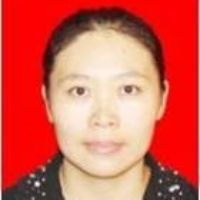Solidification Processing of Metal Alloys under External Fields
A special issue of Crystals (ISSN 2073-4352). This special issue belongs to the section "Crystalline Metals and Alloys".
Deadline for manuscript submissions: 20 May 2025 | Viewed by 1344
Special Issue Editors
Interests: acoustics; ultrasound liquid phase exfoliation; carbon nanotube; Ni-base superalloy; solidification; X-ray imaging; computational fluid dynamics; synchrotron X-ray imaging; alloys
Interests: titanium alloys; magnesium alloys
Interests: solidification theory; alloy design; nickel aluminum alloys; titanium aluminum alloys; electromagnetic shaping
Interests: composite manufacturing; damage mechanisms of materials; functional materials; mechanics of materials; environmentally friendly materials
Special Issues, Collections and Topics in MDPI journals
Interests: steel; alloys; mechanical properties; mechanical properties; precipitates; microstructure; welded joints, creep; heat treatment
Special Issues, Collections and Topics in MDPI journals
Special Issue Information
Dear Colleagues,
Almost all metal alloys are manufactured via solidification processes, and the mechanical properties of the cast ingots or components, such as the strength, ductility, fatigue life, etc., are predominantly determined by the as-cast grain microstructure formed during the solidification processes. The as-cast grain microstructures also affect, to a certain degree, the grain structures formed during any subsequent thermomechanical deformation and/or heat treatment processes. In the past 30 years or so, many physical field-based methods have been investigated with the aim of developing a generic method for optimizing microstructure that is suitable for all metal alloys regardless of the chemistry. The use of external fields has become widespread in a drive for improved materials or better understanding of fundamental phenomena. Examples include the use of magnetic fields to introduce electromagnetic braking of fluid flow or to interact with inherent electric currents to drive flow in processes ranging from traditional casting to additive manufacturing. Or to use electromagnetic fields to levitate droplets of highly reactive metals to understand and measure key material properties, with comparison to experiments under microgravity conditions.
Thus, we are delighted to extend an invitation to scientists and researchers to contribute to a Special Issue of Crystals, titled “Solidification Processing of Metal Alloys under External Fields”. This Special Issue will explore the intricate relationship between solidification microstructure/structure and external fields, encompassing phenomena such as solidification under the influence of robust gravitational, acoustic, or novel electromagnetic fields. Original research articles, short summaries, communications, and comprehensive reviews are welcomed.
The potential subjects include, but are not limited to:
- Microstructural evolution during solidification under external fields;
- Solidification theory under external fields;
- Ultrasonic melt processing;
- Electromagnetic shaping;
- Magnetic field-assisted material processing;
- Numerical simulation of solidification process.
Dr. Ling Qin
Dr. Yanchun Zhu
Prof. Dr. Jianfei Zhang
Dr. Yang Qin
Prof. Dr. Marek Sroka
Guest Editors
Manuscript Submission Information
Manuscripts should be submitted online at www.mdpi.com by registering and logging in to this website. Once you are registered, click here to go to the submission form. Manuscripts can be submitted until the deadline. All submissions that pass pre-check are peer-reviewed. Accepted papers will be published continuously in the journal (as soon as accepted) and will be listed together on the special issue website. Research articles, review articles as well as short communications are invited. For planned papers, a title and short abstract (about 100 words) can be sent to the Editorial Office for announcement on this website.
Submitted manuscripts should not have been published previously, nor be under consideration for publication elsewhere (except conference proceedings papers). All manuscripts are thoroughly refereed through a single-blind peer-review process. A guide for authors and other relevant information for submission of manuscripts is available on the Instructions for Authors page. Crystals is an international peer-reviewed open access monthly journal published by MDPI.
Please visit the Instructions for Authors page before submitting a manuscript. The Article Processing Charge (APC) for publication in this open access journal is 2100 CHF (Swiss Francs). Submitted papers should be well formatted and use good English. Authors may use MDPI's English editing service prior to publication or during author revisions.
Keywords
- solidification
- external fields
- material properties
- microstructures
- crystals
- numerical simulation
- alloys
- microstructure characterization
Benefits of Publishing in a Special Issue
- Ease of navigation: Grouping papers by topic helps scholars navigate broad scope journals more efficiently.
- Greater discoverability: Special Issues support the reach and impact of scientific research. Articles in Special Issues are more discoverable and cited more frequently.
- Expansion of research network: Special Issues facilitate connections among authors, fostering scientific collaborations.
- External promotion: Articles in Special Issues are often promoted through the journal's social media, increasing their visibility.
- e-Book format: Special Issues with more than 10 articles can be published as dedicated e-books, ensuring wide and rapid dissemination.
Further information on MDPI's Special Issue polices can be found here.









